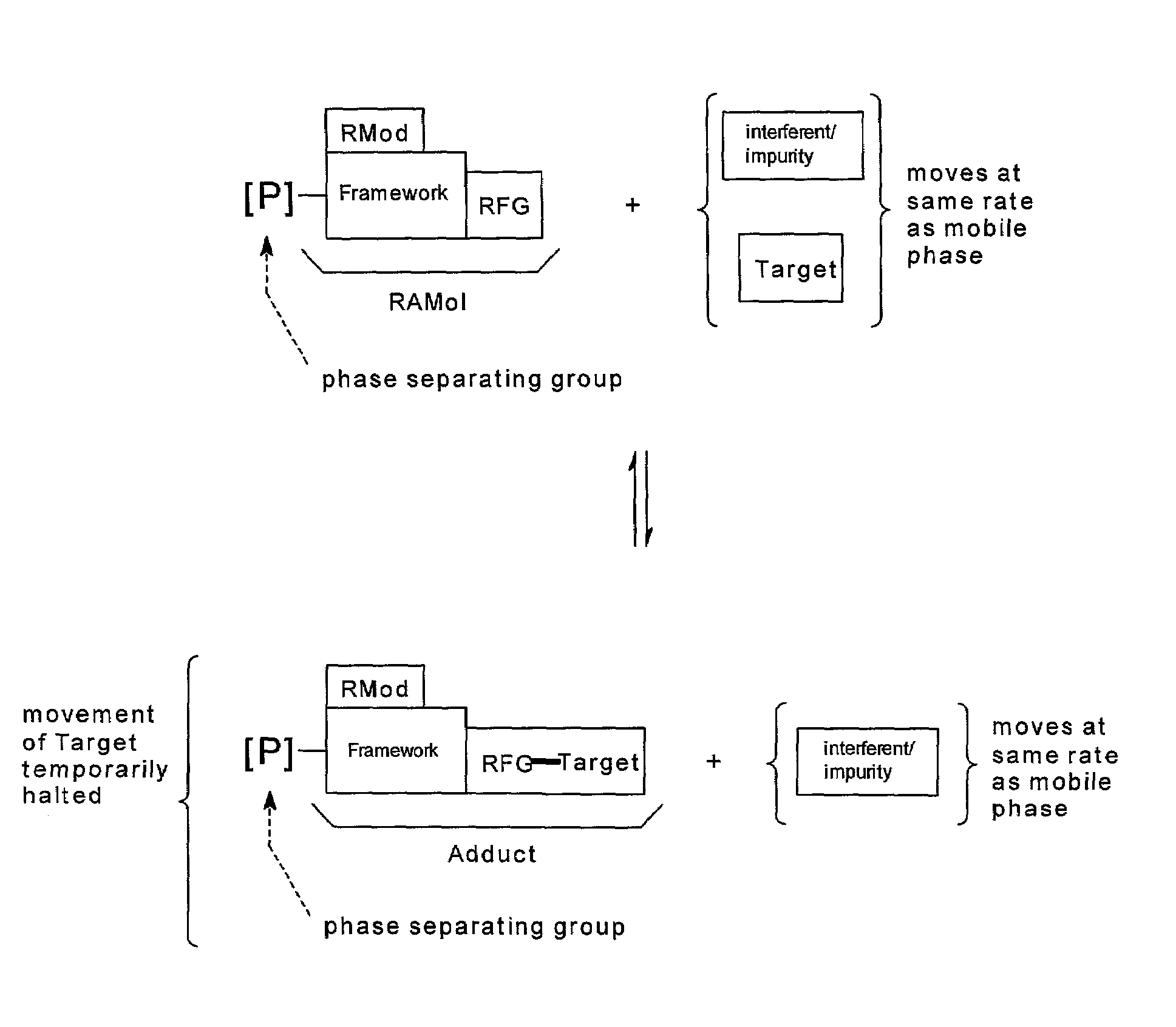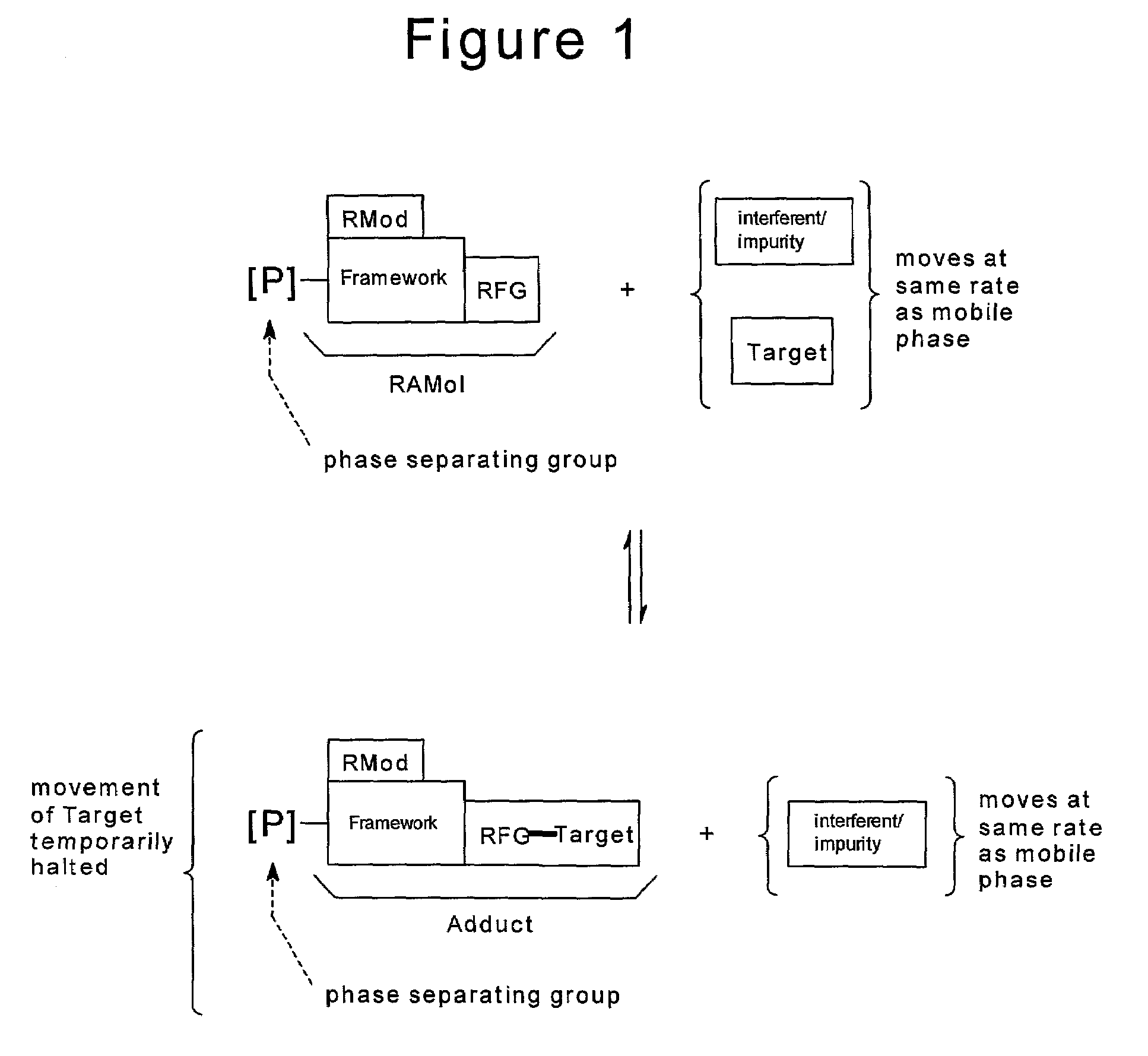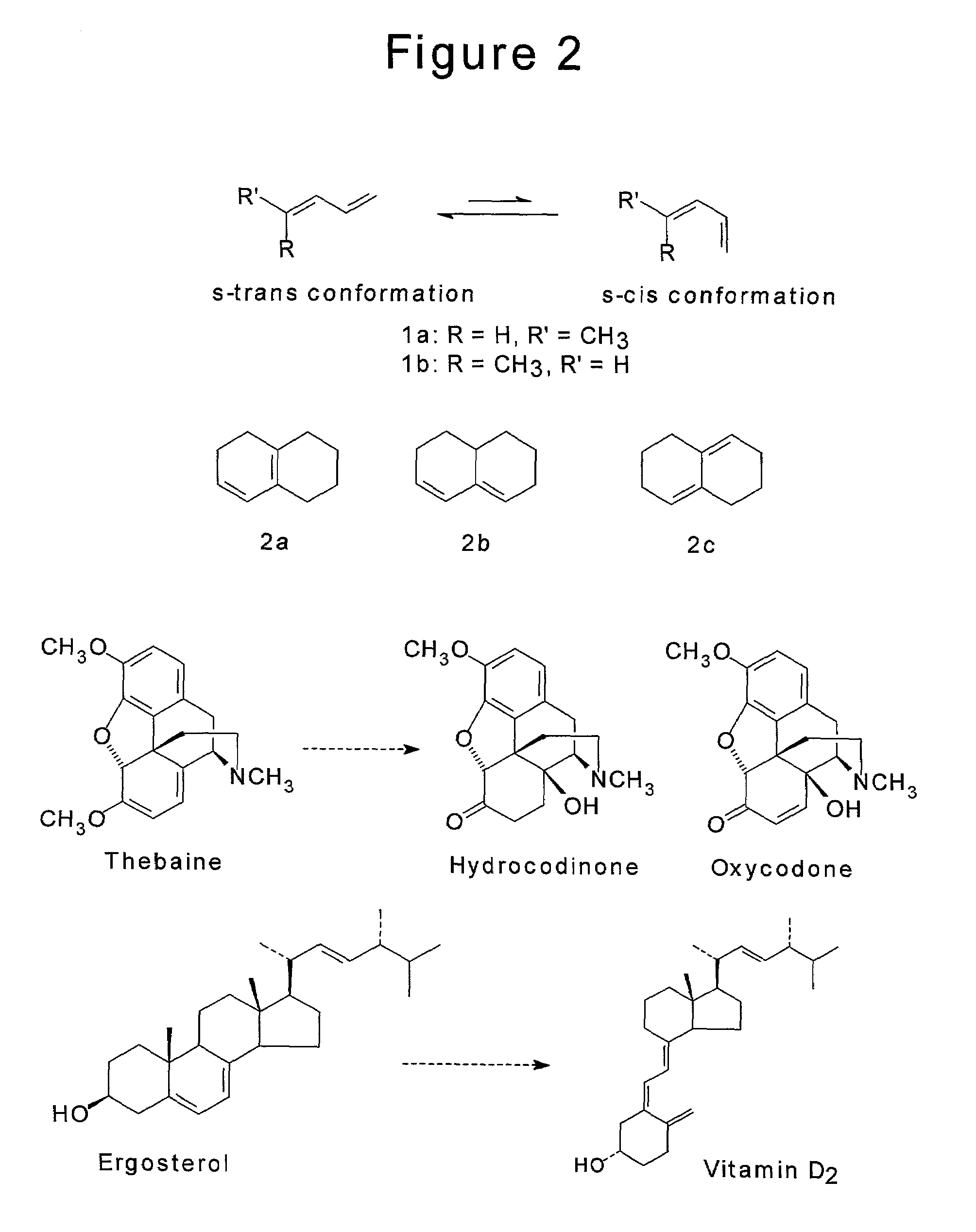Purification of substances by reaction affinity chromatography
a technology of affinity chromatography and reaction, which is applied in the direction of other chemical processes, instruments, separation processes, etc., can solve the problems of lack of specificity, inability to separate substances that share similar characteristics, and inability to use techniques for substances having low vapor pressure or thermal instability
- Summary
- Abstract
- Description
- Claims
- Application Information
AI Technical Summary
Benefits of technology
Problems solved by technology
Method used
Image
Examples
example 1
Specific Application: s-cis-1,3-diene Purification through Reversible Cycloaddition Reactions
Background for s-cis-1,3-diene Purification
[0117]A diene is a compound that contains two carbon-carbon double bonds anywhere in its structural framework. If the two double bonds are attached to one another (but are not part of an aromatic ring) to give the substructure C═C—C═C, this grouping is referred to as a conjugated, or 1,3-diene. In some cases one may make a further distinction between 1,3-dienes that relates to their conformation; that is, how the two carbon-carbon double bonds are oriented in space with relation to each other. Specifically, a 1,3-diene may be s-cis or s-trans (FIG. 2), with the latter conformer generally predominating. Furthermore, the degree to which the diene exists in one of these conformations may be greatly influenced by structural factors. For example, while diene 1a (R═H, R′═CH3) exists to an appreciable extent in the s-cis conformation, diene 1b (R═CH3, R′═H...
example 2
Description of the 1,3-diene Purification Variant of the RAC Invention
[0123]In one embodiment of this invention the reactive functional group of the RAMol undergoing cycloaddition reactions with dienes is a nitroso (FIG. 3, bottom). A nitroso group may be useful because it is known to exhibit a high level of reversibility in cycloaddition reactions with dienes, and because the extent of reversibility can be influenced by substituents on the benzene ring of aryl nitroso compounds. Other RFGs, useful in this example include, but are not limited to N═N, N═S, C═C, C═O, C═N, C═S or C≡C groups, as the dienophilic components in the cycloaddition reaction. In addition, it is possible to employ cycloadditions other than 4+2 for the reversible reaction (e.g., 4+1, 4+3).
[0124]The benzene ring of the nitroso compound illustrated in FIG. 3 constitutes the framework. The group [P] represents a linkage to a phase separating group, such as a solid support, e.g., a natural or synthetic polymer. In o...
example 3
Operation of the 1,3-diene Purification Variant of the RAC Invention
[0128]One example, of the operation of this invention for the purification of thebaine from opium extracts will be as described for the general case above. It should be understood that the invention may also be applied, for example, to the purification of ergosterol present in yeast extracts or cell homogenates, and any of the Vitamin D species present in reaction mixtures or other sources having interferents / impurities, and any other 1,3-diene capable of adopting an s-cis geometry and undergoing a cycloaddition reaction. It should also be understood that though the term 1,3-diene is used, trienes, tetraenes and other polyenes are examples of members of this target class, provided that they have as some portion of their structure a 1,3-diene that is capable of adopting an s-cis geometry. Though dienes are made up of two conjugated carbon-carbon bonds, other substances in which one of the carbons has been replace by ...
PUM
| Property | Measurement | Unit |
|---|---|---|
| boiling points | aaaaa | aaaaa |
| temperature | aaaaa | aaaaa |
| w/w | aaaaa | aaaaa |
Abstract
Description
Claims
Application Information
 Login to View More
Login to View More - R&D
- Intellectual Property
- Life Sciences
- Materials
- Tech Scout
- Unparalleled Data Quality
- Higher Quality Content
- 60% Fewer Hallucinations
Browse by: Latest US Patents, China's latest patents, Technical Efficacy Thesaurus, Application Domain, Technology Topic, Popular Technical Reports.
© 2025 PatSnap. All rights reserved.Legal|Privacy policy|Modern Slavery Act Transparency Statement|Sitemap|About US| Contact US: help@patsnap.com



